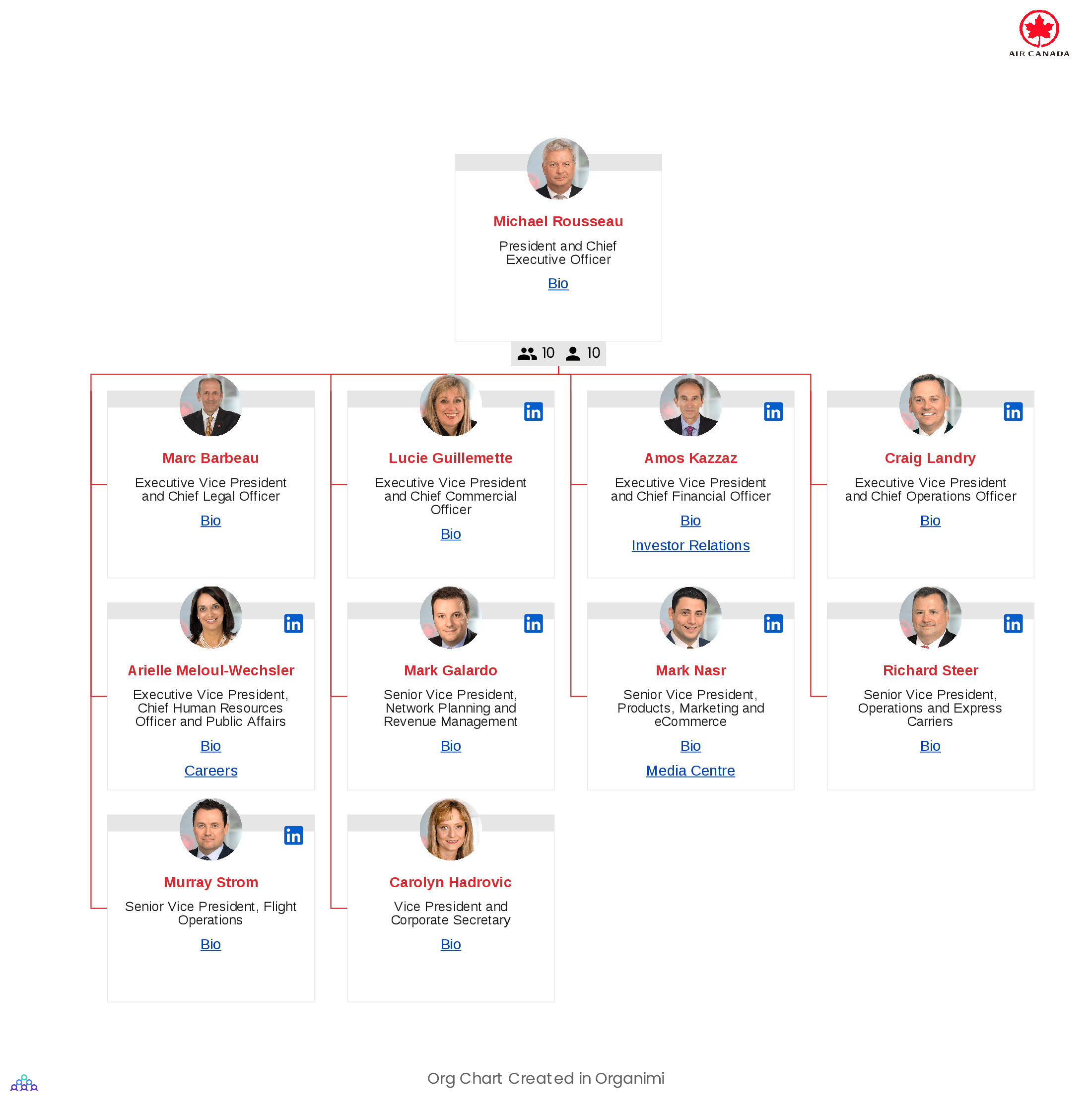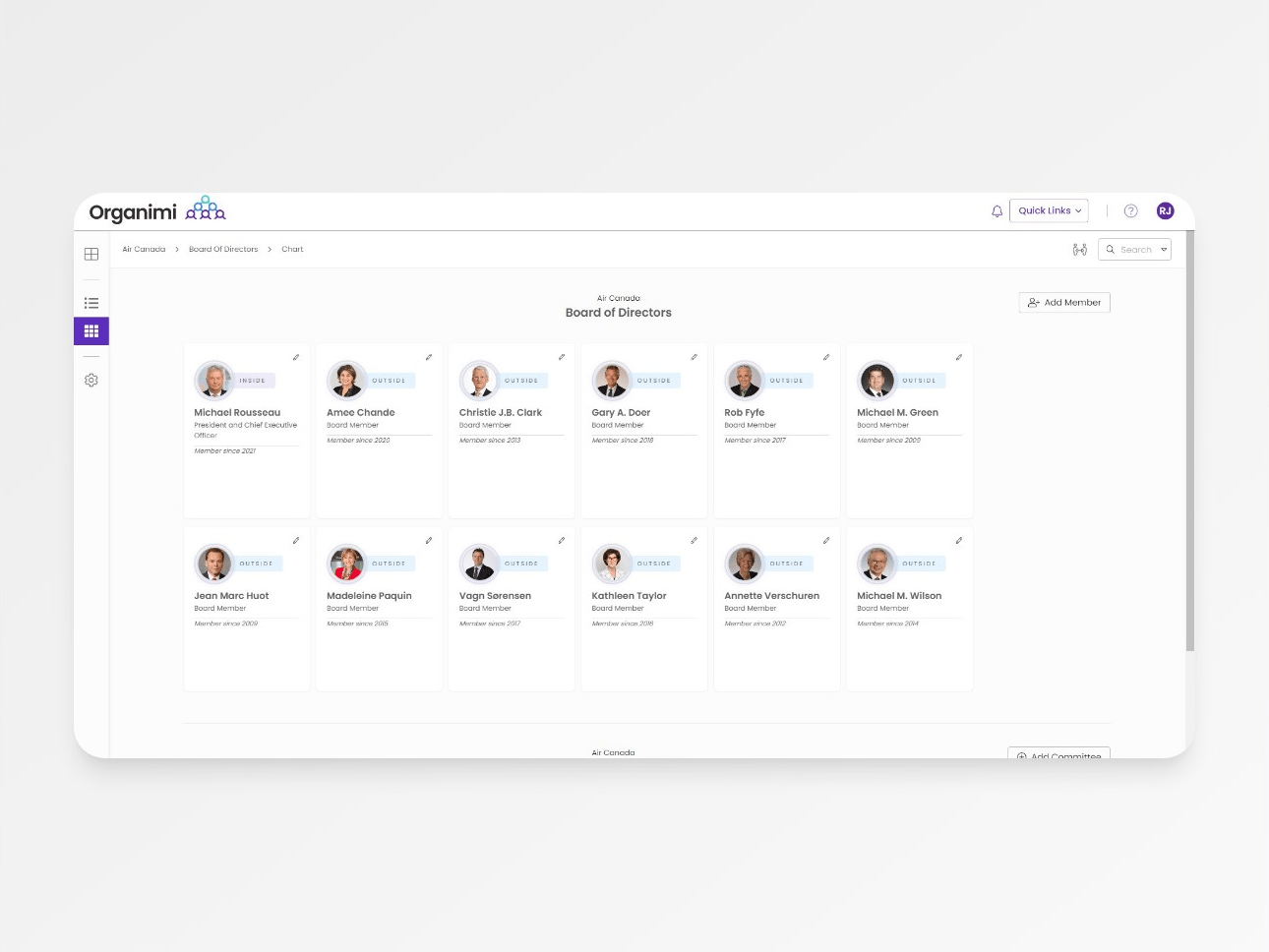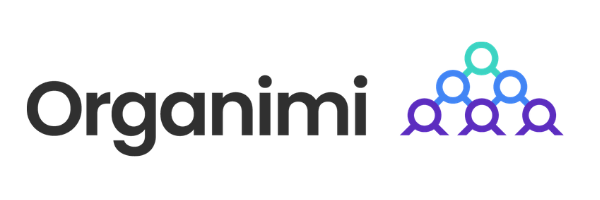Air Canada’s Organizational Structure
Create this exact chart in Organimi! Scroll below to see how.
Introduction
Air Canada is the flag carrier and the largest airline in Canada. Founded in 1937, the airline provides scheduled and charter air transport for passengers and cargo to more than 220 destinations worldwide.
A founding member of the Star Alliance, Air Canada’s biggest hubs are at Toronto Pearson International Airport (YYZ), Vancouver International Airport (YVR), and Montréal–Trudeau International Airport (YUL). The airline operates a regional service known as Air Canada Express.
Air Canada started out as Trans-Canada Air Lines, which was renamed Air Canada in 1965 following government approval. Following the deregulation of the Canadian airline market in the 1980s, the airline was privatized in 1988. In January 2000, Air Canada took over its largest rival, Canadian Airlines.
In 2017, Air Canada flew 48 million passengers and in October 2021, the Government of Canada acquired 6.4% of the airline.
Air Canada’s Management Team
Air Canada’s day-to-day operations are led by the Management Team, with the President and CEO acting as the company’s overall leader.
The CEO is supported by a relatively small team of C-level and EVP-level executives who oversee areas including Operations, HR, Legal, Network Planning, and Flight Operations and act as direct reports.

Air Canada’s Board of Directors is the governing body of the airline. Members of the board are elected by shareholders and are usually selected based on their expertise in a particular area or their industry connections.
As with many boards, Air Canada’s board typically holds an advisory role, but some do have wide-reaching powers, duties, and responsibilities as stipulated by corporate law and government regulations, particularly in heavily regulated industries such as finance and pharma.
Air Canada’s board of directors supervises the organization’s activities and is responsible for setting its strategy and overseeing its implementation by the management team, with the goal of creating and delivering sustained shareholder value.

Air Canada’s Organizational Structure
Air Canada, like most other airlines, operates with both hierarchical and functional organizational structure elements, whereby management is organized from the top down, with certain specialized departments or divisions based on the different functions of the airline.
As illustrated by the organizational chart above, Air Canada has a CEO at the top of this structure who reports to the Board of Directors. Below the CEO are key executives overseeing functional groups and divisions such as the Operations and Express Carriers, Network Planning and Revenue Management, Flight Operations, and Commercial. Within Air Canada’s org structure, the workforce is specialized for their specific tasks, and each department is designed to fulfill certain objectives.
Want to learn more about organizational structures and the role that they play within modern organizations? Here are some helpful blog resources that you can get started with:
Create this chart in Organimi!
You can download the CSV file of Air Canada’s org structure, import it into Organimi and start editing this chart right away! Here’s how:
- From your dashboard, select Data Import.
- Click the CSV tile.
- Click +Upload Your File.
- Select an Excel file from your device.
- In the Organization field, click the down arrow to select an organization.
- Click Create a New Chart
- Click Next and select: Organization Chart
- Select the auto-build tool to automatically build your chart.
- Voila!
Download CSV file: AirCanada (21.63 KB)
AirCanada (21.63 KB)
Build better org charts with
Organimi.
A powerful, cloud-based platform that helps you create, connect, and collaborate with your colleagues wherever they work.

